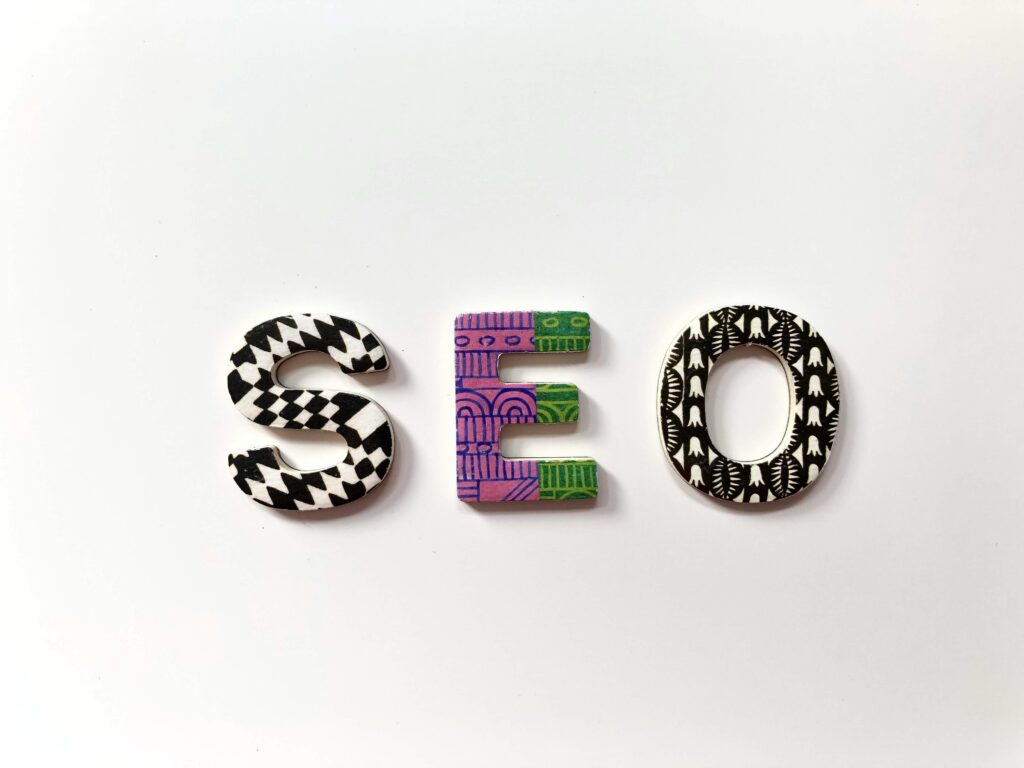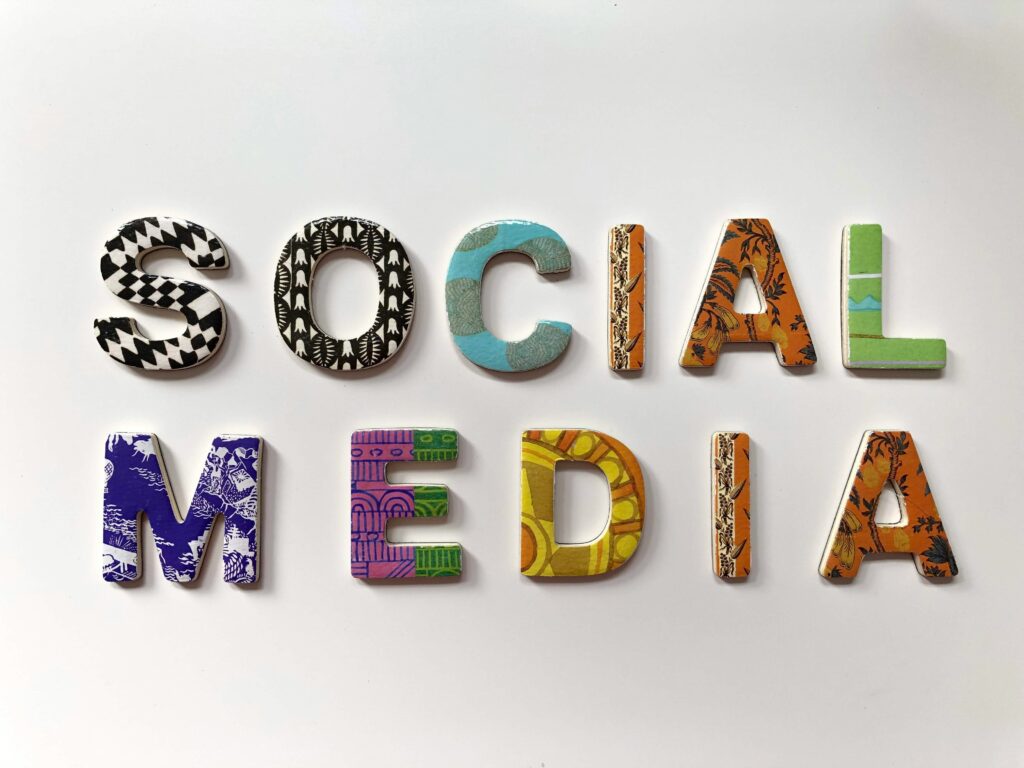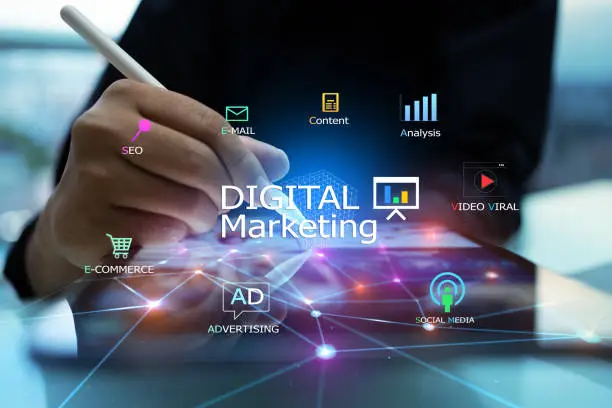What is Digital Marketing?
Digital Marketing: An In-Depth to all marketing efforts that use digital channels to promote products or services and engage with current and potential customers. Unlike traditional marketing, which relies on print, radio, or television, digital marketing leverages online platforms and technologies.
Why Digital Marketing is Important
Global Reach – Reach a global audience without geographical limitations.
Cost-Effective – Lower cost than traditional marketing, especially for small businesses.
Targeted Campaigns – Use data analytics to target the right audience.
Real-Time Data – Track performance and ROI instantly.
Customer Engagement – Build lasting relationships with customers through personalized communication.
Core Components of Digital Marketing
1. Search Engine Optimization (SEO)

SEO is the process of optimizing your website to rank higher in search engine results pages (SERPs), thus increasing organic (non-paid) traffic.
- On-Page SEO: Keyword optimization, meta tags, internal linking, content quality
- Off-Page SEO: Backlink building, social sharing, influencer outreach
- Technical SEO: Site speed, mobile-friendliness, structured data, site architecture
2. Content Marketing
Content marketing focuses on creating and distributing valuable, relevant, and consistent content to attract and retain a clearly defined audience.
- Formats: Blogs, articles, eBooks, videos, podcasts, infographics
- Goals: Educate, entertain, inform, or inspire target audiences
- Strategy: Editorial calendars, SEO alignment, customer journey mapping
3. Social Media Marketing (SMM)

SMM involves promoting content and engaging with users on social media platforms such as Facebook, Instagram, LinkedIn, Twitter, TikTok, and Pinterest.
- Organic vs. Paid Social: Building a community vs. sponsored promotions
- Key Metrics: Engagement, reach, follower growth, conversions
- Social Listening: Monitoring brand mentions and customer sentiment
4. Pay-Per-Click Advertising (PPC)
PPC is a model of internet marketing in which advertisers pay a fee each time one of their ads is clicked.
- Platforms: Google Ads, Bing Ads, Facebook Ads, LinkedIn Ads
- Types: Search ads, display ads, video ads, remarketing
- Benefits: Immediate visibility, measurable ROI, precise targeting
5. Email Marketing
Email marketing is one of the most direct and effective forms of digital marketing, used to nurture leads, convert prospects, and retain customers.
- Types: Newsletters, promotional campaigns, onboarding sequences
- Best Practices: Personalization, segmentation, automation, A/B testing
- Metrics: Open rates, click-through rates (CTR), conversion rates
6. Affiliate Marketing
Affiliate Digital Marketing: An In-Depth Overview involves partnering with individuals or companies (affiliates) to promote your products and rewarding them for each customer they bring in.
- Performance-Based: Only pay for results (sales, leads, clicks)
- Networks: ShareASale, CJ Affiliate, Amazon Associates
7. Influencer Marketing
Working with influencers—people with a strong online following—to promote your brand.
- Micro vs. Macro Influencers
- Trust & Authenticity: Consumers often trust influencers more than brands
- Campaign Types: Product placements, reviews, giveaways
8. Mobile Marketing
Targeting customers on their mobile devices via apps, SMS, or mobile-optimized websites.
- Strategies: Mobile-first design, location-based targeting, in-app advertising
- Emerging Tech: QR codes, augmented reality (AR
9. Marketing Automation

Using software to automate repetitive marketing tasks and workflows.
- Popular Tools: HubSpot, Marketo, Mailchimp, ActiveCampaign
- Common Uses: Email sequences, lead nurturing, CRM integration
Digital Marketing Funnel
The funnel represents the customer journey from awareness to conversion and loyalty:
- Awareness – SEO, social media, content marketing
- Interest – Blog posts, videos, email newsletters
- Consideration – Case studies, testimonials, product comparisons
- Conversion – Optimized landing pages, CTAs, offers
- Loyalty – Post-sale emails, loyalty programs, community engagement
Key Metrics and KPIs
Tracking digital marketing performance is essential for continuous improvement. Common KPIs include:
- Website Traffic
- Bounce Rate
- Conversion Rate
- Customer Acquisition Cost (CAC)
- Return on Ad Spend (ROAS)
- Customer Lifetime Value (CLTV)
- Engagement Rate
- Email Open/Click Rates
Popular Tools & Platforms
- Analytics: Google Analytics, Hotjar
- SEO: SEMrush, Ahrefs, Moz
- Social Media: Hootsuite, Buffer, Sprout Social
- Email: Mailchimp, ConvertKit, Constant Contact
- CRM: Salesforce, HubSpot, Zoho
- PPC: Google Ads, Meta Ads Manager
Trends in Digital Marketing (2025 and Beyond)
- AI and Machine Learning – For personalization, chatbots, and predictive analytics
- Voice Search Optimization
- Short-Form Video – TikTok, Reels, YouTube Shorts
- Privacy & Data Security – Compliance with GDPR, CCPA
- First-Party Data – As cookies phase out, businesses must collect data directly
- Augmented Reality (AR) & Virtual Reality (VR) – Immersive brand experiences



